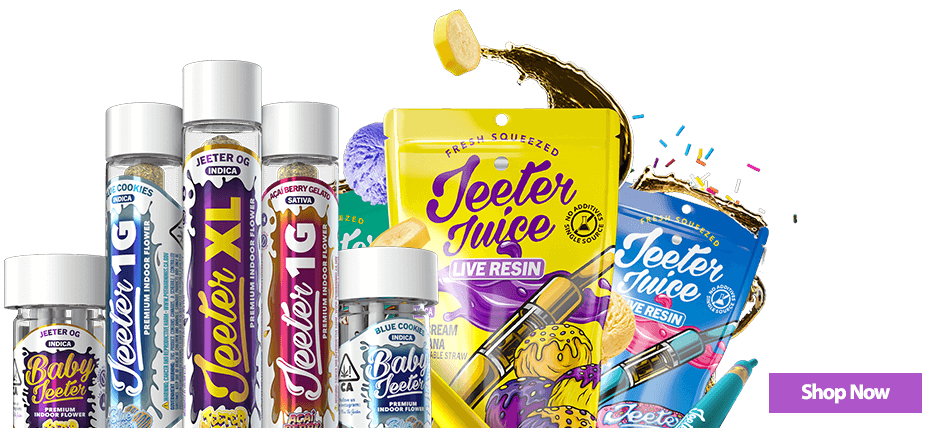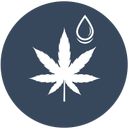Flower
Cannabis Flower
When talking about cannabis, our terminology refers in essence to dried flower buds from female marijuana plants. Flower contains a broad spectrum of cannabinoid derived products helping the effects of smoking cannabis. This product contains trichomes that provide significant THC and terpenes, as well as the organic smell of flowering pots.
The cannabis flower is a widely used form of cannabis consumption despite its versatile use methods that allow smoking with either pipes, bowls or bongs. It can be wrapped into joints or bluntly or even cooked for cooking purposes.

Cannabis often comes with a variety of nicknames such as: Weed, grass, weed, pot, ganja, reefer, and herb are just some common slang words that pop up. As cannabis became more popular as a legal and reputable form of healing and anti-inflammatory treatment the medical field researchers have been able to understand the various different aspects of the plant and how it is used in medicine.
Flowers are smokable, trichotaped parts of the female marijuana plant. It is a popular form of weed due to its versatility and is easily available for consumption in many forms such as smoking in a pipe or joint, vaporized through a vaporizer, or in edibles.
Flower, bud, or nug, is the dried and cured part of the cannabis plant from which smoke is made. There are many other methods for consuming cannabis, but smoking the flowers remains as one of the most popular options.
Inhaling, smoking, or vaporizing cannabis flowers are the most common forms of cannabis flower consumption. A joint, pipe, bong, bubbler, or vaporizer are just some of the many methods of ingestion.
The effects of inhaling cannabis flowers often peak after 30 minutes and gradually wear off over the course of an hour. The precise impact of cannabis use is variable, depending on the smoker, the strain, and the amount consumed. Due to individual differences in tolerance, users must adjust their dosage accordingly. It is strongly recommended to put the flowers in an airtight container until you're ready to use them.
The History of Cannabis
The cannabis plant is a very versatile plant with a long history of use. Cannabis has been used for centuries by many cultures for its medicinal and recreational properties. The exact origins of cannabis plants are unknown, but it is thought to have originated in Central Asia.
In China, cannabis was used to treat a variety of illnesses and ailments, including gout, rheumatism, malaria, and absent-mindedness. In India, it was used to relieve pain and increase appetite. In the Middle East, it was used to treat insomnia and anxiety.
It is known that the first cannabis plants were introduced to the Americas by Spanish and Portuguese explorers in the 16th century. It quickly became popular among settlers and indigenous peoples alike. By the early 1800s, cannabis was being grown commercially in North America for a variety of purposes, including rope, fabric, and paper.
In the 20th century, cannabis plant was outlawed in many countries due to its perceived links to crime and violence. In recent years, however, there has been a growing movement to decriminalize or legalize cannabis for medicinal and recreational use.
The Different Types of Cannabis Flower
There are many different types of cannabis, each with their own unique set of properties. Different types of cannabis have different effects as well as organic aromas found in cannabis. These effects can be sedative, energizing, pain relieving, or non-psychoactive, depending on the cannabis variety. Some weed varieties are known for their high concentrations of THC—a psychoactive compound. These varieties are often called "driver" weed because of their strong psychoactive effects.
Other weed varieties have a high concentration of CBD, a non-psychoactive compound which has shown to have various medicinal benefits. These varieties are often called CBD-rich cannabis. Weed varieties are often classified as Indica, Sativa, or Hybrid.
How To Define Cannabis Blossoms
Medicinal cannabis (also known as medical marijuana) refers to cannabis plants in which the blooms have therapeutic effects. There are a wide variety of possible uses for cannabis flowers, each of which depends on the specific chemical makeup of the plant. The cannabinoid profile of a certain strain of cannabis determines the effect it will produce.
Only around 85 psychotropic and therapeutically significant cannabinoids have been found so far, with the most notable being tetrahydrocannabinol (THC) and cannabidiol (CBD). Even though the effect can be modified by other cannabinoids.
In order to accurately assess the cannabinoid content in cannabis flowers and granules from crushed flowers, the manufacturing and quality of medicinal cannabis flowers are strictly regulated. Finally, sellers must provide the correct THC and CBD percentages. However, cannabis blossoms are a natural resource that should be respected. Therefore, the components' concentrations may shift based on the parent plant's genetics.
Flowers Of Several Strains Of Cannabis
There are three distinct types of cannabis flowers, and all of them have medical and recreational applications. While female plants are used as the means for producing psychoactive effects, male plants also serve their purpose in the cannabis industry, particularly when it comes to the gene pool diversity of the three main types of weed.

· Sativa
When compared to other strains, sativa produces the highest levels of THC. The psychoactive effects of cannabis sativa include an increase in energy and sociability. In order to alleviate social anxiety and boost mood and energy, sativa strains are highly recommended.
· Indica
Cannabinoids in Indica cannabis are more subdued and pleasant. Excellent remedy for agitation, pain, and distress. Relaxed and free of cramps thanks to Indica's stress-busting properties. Indica is commonly used to improve sleep because of its sedative effects.
· Hybrid
Hybrid strains are ideal for those who want to strike a balance between euphoria and calmness. Those looking to reduce their pain while maintaining an active, stress-free lifestyle can try a hybrid strain of cannabis.
The Most Frequent Types Of Flower
It seems to be unprocessed, unwrapped flower buds, or "loose flower." The weight and strain information of your loose flower order will be clearly labeled on the inside of the packaging. To make the flower easier to handle and eat after it has been harvested, dried, and cured, it is often crushed in a cannabis grinder. It may be smoked in a pipe or bong, or even used for cooking if you remove the seeds.
You may also buy flowers in the form of pre-rolled joints, sometimes known as pre-rolls. This convenient item saves the consumer the trouble of grinding, storing, and rolling their own joint. Pre-rolled joints are often sold in packs of one, three, or five and each joint typically weighs about 0.75 grams.
Due to the vast selection of cannabis product-categories, some stores have more products than others. Wax and other concentrates, cannabis oil, kief, or a combination of these can be added to the inside and outside of pre-rolled joints, making them even more potent.
Methods For Smoking Marijuana Buds
To smoke cannabis is by far the most common method of ingesting it. Depending on the amount and the person, the effects can be felt almost immediately and can last anywhere from a few hours to a day. Most pot smokers consume the cannabis flower in one of several ways.

1. Crushed flowers are smuggled into a paper tube and smoked as a joint, often known as a marijuana cigarette
2. Similar to joints, blunts are made by rolling ground-up flowers in a blunt wrapper or a hollowed-out cigarette
3. The pipe is one of the most popular smoking devices since it allows the user to take simply the cannabis flower, the pipe, and a lighter or match to enjoy a smoke anywhere
4. The bong, sometimes called a water pipe, is a device used to consume cannabis while filtering the smoke via water
The Proper Way To Light Your Joint
The joint is the most popular form of marijuana smoking. The only things you need to roll a joint are some flowers, paper, and rolling paper. Despite its usefulness, a grinder is not required. Tobacco rolling papers are easily available and inexpensive. Simply light the end without the filter, inhale through the filter, and enjoy.
While pulp is used to make the vast majority of rolling papers, there are several varieties of paper made with smokers in mind, including larger sheets, papers made from hemp, and even packs that include extra paper for producing filters.
Methods For Lighting A Blunt
The notion of a blunt is similar to that of a joint, only on a larger scale. When smoking a blunt, similar to a joint, you only need the cigar wrapper and the ground flowers (again, the grinder is optional). Light one end of the rolled blunt and smoke from the other. The widespread availability of cigars at convenience stores means you can "blunt it up" just about everywhere. The only drawback to smoking a blunt is that you end up swallowing the tobacco off the cigar wrapper.
Pipe Smoking Techniques
When it comes to smoking marijuana, a pipe is perhaps the most practical option. Pipes are convenient portable smoking devices because they are small, compact, and easy to use. To smoke a pipe, you need just break apart the flower, fill the bowl with the flower, set the bowl near a flame, and gently inhale the smoke from the mouthpiece. Pipes are reliable and compact pieces of cannabis consumption technology, making them perfect for clandestine or on-the-go use.

Tips For Using A Bong To Smoke Weed
A bong is a water pipe with a chamber, a downstem, a mouthpiece, and a bowl for smoking weed or other substances. If you're looking to tone down the intensity and pungentness of your smoke session, a bong is the way to go.
Before using a bong, fill the chamber with enough water to completely submerge the stem. Put half as many dried flowers as you can into the bowl. Put your tongue over the mouthpiece to ignite the flower within the bowl. Take a deep breath in and let the smoke enter your lungs via the water. When you're through smoking, dump out the flower and wash the bong so it may be used again.
Cannabinoid Flower Dosage
There is a wide range of cannabis strains, each with its own potential effects due to differences in THC levels, cannabinoid ratios, and terpene profiles. Cannabinoids are chemical compounds that act on the endocannabinoid system to generate psychological and physical effects; their concentration in a flower is a representation of its potency. For instance, if the label on your OG Kush flower vial reads 18% THC, you may assume that it contains 180mg of THC per gram of flower female plants and male plants.
Keep in mind that the effects of ingesting edible forms of marijuana are very different from those smoking the substance. Ingesting 180 mg of THC, the amount found in one full gram of marijuana, can get the average person high for a few hours, but doing so for six hours or more may lead to paranoia, panic attacks, and an accelerated heart rate.
Thankfully, certificates of analysis are available for lab-tested products bought from authorized, controlled dispensaries or delivery companies, allowing for easy, exact dosing. You can find the percent THC content on the packet of cannabis flowers to get an idea of the potential effect of a single toke on a joint or bong.
Moderate Cannabis Has Less Than 10% THC
THC concentrations between 10% and 20% are often sufficient for occasional users and are considered potent for novices. Among the most potent cannabis strains are those that contain at least 20% THC.

A rule of thumb to keep in mind: note the THC content, take a puff, and wait 15 minutes before smoking more to get a feel for the strength.
Grade A Blossoms: Privately Held Inventory
Private Reserve refers to a dispensary's highest quality cannabis selection. In most cases, this means the dispensary itself is responsible for growing and harvesting the plants. This is not to be confused with the Reserva Privada cannabis product, which is often used by popular brands to promote various strains.
Highest Quality
High-quality cannabis, although not quite as fine as Private Reserve, is called "top shelf." These several names for this grade of weed all mean the same thing: artisanal, fire, chronic, loud, or piff. Buds in this quality range command a higher price since they need more time, effort, and care to cultivate and harvest.
Growers put emphasis on quality over quantity while cultivating high-end cannabis. It's best to have dark green leaves and bright purple or orange flowers. If you examine closely, high-quality buds will contain many intact trichomes. Cotton candy-like stickiness describes the gummy consistency of several strains of "fire" cannabis. However, your nose is your best indicator, so seek out a robust aroma.
Drop-down Drawer
Bottom shelf weed is of the lowest grade. Bottom-tier cannabis goes by a variety of aliases, including brick weed, dirty marijuana, schwag, popcorn, and ditch weed. This term is used in today's shops for cannabis that has scored lower on the quality scale.

The worst flavor comes from burning old, seedy, and stemmy low-grade cannabis. Cannabis of the lowest quality is typically very black in color, has a muted smell, and has few if any trichomes visible on the plant's surface.
Strain Varieties
As mentioned above, Indica and sativa are the two main strain varieties of weed.
- Indica: Indica varieties are known for their relaxing and sedative effects, making them ideal for those seeking relief from pain or anxiety. The history of Indica dates back to the 18th century, when it was first used in India. Indica was originally grown for its medical properties and was used to treat a variety of ailments. In the early 20th century, Indica began to be used recreationally, and it soon became one of the most popular strains of cannabis. Today, Indica is widely available across the world and is enjoyed by millions of people.
- Sativa: Sativa varieties are known for their uplifting and energizing effects, making them ideal for those seeking a boost of energy or creativity. Sativa strains of cannabis are often used to treat depression, fatigue, and lack of appetite.
- Hybrid: Hybrid flower varieties are a mix of both Indica and sativa varieties, providing a balanced effects from both types. Hybrid strains of cannabis are a mix of indica and sativa. They can provide the best of both worlds, offering relaxation and energy in equal measure.
Other weed varieties, such as ruderalis, are less commonly known.
Cannabis can be consumed in many ways. The most common way to consume cannabis is by smoking it. Cannabis can also be eaten, vaped, or applied topically. These different methods of consumption can have different effects, with different onset and duration times.
The Benefits of Cannabis
Cannabis has many benefits, both medicinal and recreational. The benefits of using weed include relief from pain, anxiety, and insomnia. Cannabis can also be used to improve appetite and nausea in cancer patients undergoing chemotherapy treatment.
Proceeding With Caution
Although cannabis is generally considered safe, there are some risks associated with its use. The effects of cannabis can vary dramatically between individuals, depending on factors such as:
- The amount taken
- The way it is consumed (e.g. smoked, eaten etc.)
- The strength of the weed
- The way it is grown and prepared
Effects
Smoking weed can have very bright effects on human body. These effects vary depending on factors such as what levels of THC and CBD is in the weed you smoke, what physician and mental condition you are in, what strain and type of weed you smoke. Here are some effects you may experience when consuming weed, including:
- Feeling relaxed, happy and giggly
- Changes in perception
- Confused thoughts, loss of short-term memory
- Impaired coordination and judgement
- Increased anxiety or paranoia
- Increased heart rate
- Cannabis can be addictive, and it can worsen pre-existing mental health conditions
- As with tobacco, marijuana consumption increases the risk of developing a variety of health conditions such as cancer
Medical Marijuana
In recent years, there has been an increase in research on the potential health benefits for medical cannabis patients. Weed is becoming increasingly popular as a natural way to relax and deal with stress. Medical Marijuana has been used for centuries, and recent research has shown that it can be effective in treating a variety of conditions. Weed is non-addictive and has few side effects, making it an appealing option for those looking for an alternative to traditional medications.
Marijuana is known to have a variety of medical applications, including pain relief, nausea control, and improved appetite. Some studies have even suggested that cannabis may help to improve symptoms of certain conditions like Alzheimer's disease and cancer. However, more research is needed to confirm these potential health benefits.
Despite the lack of definitive proof, many people are still interested in using cannabis for medicinal purposes. If you're considering trying cannabis for your health, it's important to talk to your doctor first to make sure it's safe and appropriate for you.
A number of studies have shown that cannabis can reduce pain in a variety of conditions, including arthritis, cancer, and multiple sclerosis. Here are some of these conditions:
- Cancer treatment: Cannabis has been shown to kill cancer cells in a number of studies. It may be effective in treating various types of cancer, including brain, breast, colon, and skin cancers.
- Seizure control: Marijuana has been shown to reduce seizures in a number of studies. Cannabis may be effective in reducing seizures in conditions such as epilepsy and Dravet syndrome.
- Alzheimer’s disease: Marijuana may help to treat Alzheimer’s disease. Marijuana may help to improve the symptoms of Alzheimer’s disease by reducing inflammation and protecting the brain from damage
- Asthma: Cannabis may help to treat asthma. Cannabis has been shown to improve lung function and reduce bronchial inflammation in asthmatic patients.
Cannabis is just one of many potential treatments for these conditions. Talk to your doctor about whether cannabis is right for you.
See more information at National Center for Complementary and Integrative Health
Growing The Cannabis Flower
Growing cannabis can be a fun and rewarding experience. But before you get started, here are few things you need to know. This is a quick summary on what it takes to grow flower on your own.
1. Growing your own cannabis flower is a great way to save money and have complete control over your supply.
2. Start with good quality seeds or clones from a reputable source.
3. Choose a growing method that will work best for you and your space. Indoor, outdoor, hydroponic, aeroponic, etc.
4. Make sure you have the right supplies on hand before you start growing: pots, soil, nutrients, grow lights (if needed), water & humidity monitors, etc.
5. Provide your plants with the proper light, water and nutrient schedule specific to the strain you are growing.
6. Be patient! Flowering takes time – typically 8-12 weeks indoors or 6-10 weeks outdoors depending on the strain(s) you’re growing.
7. Keep an eye out for common pests & diseases that can affect cannabis plants and take action accordingly if necessary to keep your plants healthy.
8. Harvest when your flowers are fully mature – this is typically indicated by trichomes that are mostly cloudy/opaque with some amber coloration visible.
9. Trim & cure your buds properly to preserve their quality & maximize potency/flavor.
Your Guide To Purchasing Cannabis Flowers
When you are ready to make your a purchase, you must research and find reputable cannabis dispensary around your are. You can search Weedbates to find the cannabis dispensary that will carry the product that you want to purchase. Before making the purchase keep these important factors in mind.
- Authenticity
There is a lot of counterfeit weed on the market. When purchasing flower you should always pay attention to make sure that the packaging has Metrc UID. This is an identification number issued by Metrc. Metrc is the legal cannabis regulation technology company that regulates cannabis cultivator to the dispensary or as otherwise referred to seed to sale.
- Quality
Make sure to check the date of manufacturing. Cannabis flower has a short shelf life. From the date of manufacturing to the date of the actual sale it can take from one week to couple of weeks. It is important to make sure that the cannabis you are purchasing isn't old and dried out.
- Price
Flower comes in all kinds of brands, flavors and qualities. When buying weed make from medical cannabis local dispensary make sure to do your research. Websites like Weedbates help you find research marijuana strains as well as understand what effects and flavors it has. There are thousands of weed reviews you can read, which will help you make the right decision when purchasing weed
- Price of the weed varies from brand to flavor to strain and many other factors. You should always look for possible deals that local dispensaries or delivery companies post online. This will help you find the best flower at the best possible price.
How to Properly Smoke The Cannabis Flower
There are many different ways to smoke cannabis, each with its own set of benefits and drawbacks. Which method you choose will ultimately be a matter of personal preference. Here are some of the most popular ways to smoke cannabis flower.
- Joints: Joints are perhaps the most iconic way to smoke cannabis flower. They are easy to roll and can be shared with friends. However, they can be harsh on the throat and lungs.
- Blunts: Blunts wraps are similar to joints but are rolled with tobacco leaf instead of paper. This can make them more potent and add a nicotine buzz. However, blunts are also more likely to cause lung irritation.
- Bongs: Bongs cool and filter the smoke, making for a smooth hit. However, bongs can be difficult to clean and require a lot of water.
- Pipes: Smoking weed with a pipe is also very popular. Pipes come in all shapes and sizes and can be made from a variety of materials. They are relatively easy to use but can get hot and burn the lips.
- Vaporizers: Vaporizing is another popular method of consuming weed. Vaporizers heat cannabis flower without burning it, delivering a smooth hit with little lung irritation. However, vaporizers can be expensive and require regular cleaning. Vaporizers heat the cannabis plant material to a temperature that is lower than the point of combustion, releasing active ingredients without producing smoke. This method is thought to be healthier than smoking as it does not involve inhaling combusted plant matter.
Now that you know how to smoke the cannabis flower, you need to also be aware that there are many different strains of weed, each with its own unique cannabinoid profile. The most well-known cannabinoids are THC and CBD. THC is responsible for the psychoactive effects of weed while CBD does not have any psychoactive properties.
THC is delivered to your body regardless the method of consumptions. It can be consumed in many different ways, including smoking, vaporizing, and eating as we mentioned above. Hands down, the most popular method of consumption is smoking. Smoking flower allows the user to control the dosage and effects more easily than other methods such as edibles and topicals.
- Edibles are another popular way to consume. Edibles are food items that have been infused with cannabinoids. They can come in many different forms, such as brownies, cookies, candies, or even gummies. Edibles provide a longer-lasting effect than other methods of consumption due to the fact that they must be digested by the body before the cannabinoids are absorbed into the bloodstream.
- Topical products are also available for those who want to experience the benefits of marijuana without having to ingest it. Topicals are applied directly to the skin and allow cannabinoids to be absorbed through the pores and into the bloodstream. These products are often used to treat localized pain or skin conditions such as acne or inflammation.
Common Smoking Techniques
1. Joints and Blunts
Joints and blunts are the most common methods of smoking. Blunts are essentially cigar joints that have had the tobacco leaves removed or have been hollowed out. One definition of "blunt" is "very thick," describing a joint that is abnormally large.
Online or at brick-and-mortar shops, you can get your hands on a grinder, some sheets, some blunt wrappers, and maybe even a few blunts. Some cannabis consumers like the process of grinding their own buds, filling their own papers, and rolling their own joints. The practice of smoking one of these varieties of cannabis is also widely accepted internationally. The old proverb goes something like, "Huff, puff, pass."
2. Bongs and Pipes
Bubblers, chillums, spoons, steam rollers, and Gandalf pipes are just a few of the names for the many different shapes and sizes of cannabis pipes. The pipe is the most portable and discrete smoking device since all you have to do is crush up some weed, put it in a bowl, and light it up. Glass is by far the most common material for pipes, however ceramic, metal, wood, and silicone are also common.
The same is true of bongs; they both allow smokers to enjoy their hobby with minimal effort. The only steps required to operate a bong are grinding the cannabis, filling the bowl, adding water or ice, and lighting it. Like pipes, bongs come in a wide variety of shapes and colors, and may be made from a wide variety of materials, from glass to plastic to ceramic to bamboo to metal to silicone.
Remember too that stoners are very resourceful; many bongs are fashioned from everyday materials like fresh apples, beer cans, and empty water bottles.
3. Vaporizer
One of the most common practices nowadays is to use a vaporizer to take in cannabis. Vaporizers, like pipes, bongs, and joints, are widely available in head shops and on the web. Vaporizers, in contrast to the previously described smoking methods, use a more gentle kind of heating to activate the cannabinoids.
The active ingredients in cannabis are vaporized rather than burned, thanks to a well calibrated heating process. The devices use just enough heat to evaporate, but not burn, the plant material or leaves, allowing users to enjoy all of the terpenes and cannabinoids without the tar and carcinogens that may develop from doing so.
More and more vaporizer models have entered the market as the practice of vaping has gained in popularity. Large desktop models enable for the most precise temperature adjustment, which is ideal for aficionados interested in certain terpenes and cannabinoids. Despite their lack of customization, vaporizers continue to be the most useful device. In between, you have a lot of leeway.
4. A Proper Method Of Bud Storage Is Required
Proper cannabis preservation is crucial when not growing buds to enhance their calming effects. The solutions are straightforward: put them in an airtight, heavy container like a Mason jar to protect them from air, heat, humidity, and light. Because of its ability to keep humidity consistent, airtight containers are a great option for anyone looking for reliable storage solutions.
Early Warnings Of Flower Deterioration
To a certain extent, the color of cannabis flowers is indicative of their experience. The vibrant green, purple, and orange blooms eventually wither and turn into rusty, khaki-green clumps. However, if their trichomes are not messed with, they will remain undamaged.

Cannabis, when left to its own devices in a container, may develop an unpleasant odor that can catch even seasoned users off guard. By letting in some fresh air, the cannabis should lose its musty, fermented aroma, which, upon closer inspection, turns out to be a mix of hay and parchment paper.
Both the flavor and the texture of aged cannabis are different from those of freshly harvested flower. Some people think the difference between fresh and dried cannabis is negligible, while others find it sour. The taste, however, becomes earthier when THCA (tetrahydrocannabinolic acid) degrades from THC (tetrahydrocannabinol) to CBN (cannabinol) during flowering.
What Causes Cannabis Plants To Bloom?
Cannabis is a short-day plant, which means it begins blooming when the number of daylight hours decrease considerably in a natural outdoor setting, which happens as the seasons transition from summer to fall. Plants typically begin flowering a month before the fall equinox and are ready for harvest by late October (in the northern hemisphere), however certain long-flowering types may take until late November or even early December if the weather is warm enough.
Most commercial cannabis strains have a considerable degree of "indica" genetics, which means they are descended from plants native to the hot highland areas of India and Afghanistan, where summers are generally hot and sunny and winters are chilly and gloomy. As a result, they have evolved to be completely grown and blossoming by the time winter arrives, and they rely significantly on the extreme shift in day duration to induce flowering.
Floral Cannabis Plants Grown Inside
When cultivating inside, flowering may be precisely controlled by adjusting lighting conditions. Growers of indoor cannabis often expose their plants to 18–24 hours of light per day during the vegetative stage, and then lower the amount of light they get to 12 hours per day after blooming begins. Some farmers intentionally expose their crops to increasingly darker conditions over the course of two to three weeks to more closely mimic the natural outdoor cycle.
Even more extreme measures are used by some gardeners, who give their plants 24 to 48 hours of total darkness before starting the 12 to 12 cycle (light being on for 12 hours and off for the following 12 hours) in order to accelerate blooming. Since florigen (the "flowering hormone") is mostly generated at night, this is supposed to hasten the onset of blooming. As with many other folk tales propagated by farmers, this one appears to be without foundation in fact. For short-day plants, however, studies on inductive darkness durations of up to 16 hours have showed no deleterious repercussions.
Consequences of Marijuana Flower Use
In spite of its rising popularity, inhalation therapy with medicinal cannabis flowers is still met with skepticism by the medical establishment. An often-heard argument against this form of treatment is that it hasn't been well studied. At the same time, worries are routinely raised about the security surrounding its cultivation and sale.

Among the most often raised arguments against cannabis flowers is the fact that inhalation results in unanticipated pharmacology, leading to rapid and excessively high THC concentrations in the body, necessitating several inhalations within 24 hours. Some experts are concerned about an increased risk of addiction since the rapid onset and diminishing concentration of effects are comparable to the pharmacology of short-acting opioids.
In addition, it is speculated that ingesting cannabis flowers may lead to psychosis. Commonly cited among the potential negative effects of marijuana use is the increased risk of developing depression. Peripheral occlusive disease and preexisting cardiovascular disorders are two other conditions that should not be treated with medical cannabis.
Reasons Of A Financial Nature
In terms of revenue, cannabis flowers haven't lost ground against cannabis extracts. To evaluate strains, researchers looked at their THC content. In light of the new law, sales of cannabis flowers have skyrocketed in contrast to other medicinal cannabis dosage forms. As a result of supply fluctuations, however, cannabis flower sales have fluctuated far more than the industry average.
In particular, health insurers often point out the astronomical price of cannabis flowers compared to dronabinol and cannabis extracts. This argument against the prescription stems from the method of cost assessment used by health insurers: They estimate that every month, each patient will smoke 100 grams of cannabis flowers.
A Clinical Practice
The clinical practice has shown that medical cannabis is often well tolerated, which is consistent with the study's adverse event scenario. One study in particular showed that dry mouth, disorientation, and fatigue were the most common unwanted effects. Further, even if the medical effects are correlated with marijuana use, not every sufferer will improve with cannabis treatment based on the findings of this study.
There is a difference between Cannabis sativa and Cannabis indica, with the latter being optimal for use in the evening and overnight hours and resulting in a restful sleep in more than 95% of users. Since indica strains of cannabis tend to make users sleepy during the day, sativa varieties seem preferable. Therefore, most patients use several strains of cannabis flowers at different times of the day.
Patients seldom use more than four puffs of their inhaler daily. The pharmacokinetics of cannabis flowers are thus analogous to those of metamizole, which also requires dosing every four to six hours in medical cannabis dispensary.

Cannabis flower treatment research may be conducted if cannabis extract therapy is unsuccessful. This is because the THC and CBD content of commercial cannabis flowers varies widely, and unlike extracts, it can be determined whether a flower is a pure indica, sativa, or hybrid strain.
Which Medical Professional Recommends Cannabis Blossoms?
Flowers from the cannabis plant can be prescribed by any qualified doctor. You don't have to wonder "Which doctor prescribes cannabis flowers?" for very long. This is because, with the exception of dentists and veterinarians, any licensed physician can legally prescribe cannabis flowers as a narcotic (BtM).
There must be a precise naming of the cannabis blossoms. Whether or not the patient is responsible for purchasing cannabis flowers should also be made clear, as well as whether or not health insurance would pay the expenditures. As for the purchasing itself, that will depend on the scope allowed in a particular state. However, marijuana being illegal on the federal level is the primary reason why health insurance companies do not cover cannabis-related expenses.
Equally to note here is that cannabis extract, which may be prescribed and given orally in precise doses, is an alternative to genuine cannabis flowers. Dronabinol, which contains no THC, does not need an exemption permission under the term, but THC extract must.
THC Taken Orally
The high lipophilicity of THC means that it is absorbed almost entirely but slowly in the gut after oral ingestion. As a result of intensive first-pass metabolism, oral administration results in a systemic bioavailability between 5% to 15%.
Much of it is broken down by CYP enzymes in the liver, where it is converted into a variety of metabolites, including the pharmacologically active 11-hydroxy-THC, which contributes to the relatively extended duration after the peroral consumption. An oral dose takes 30–90 minutes to start working, 2–3 hours to peak, and 4–8 hours to wear off.
The pharmacokinetics of ingesting cannabis orally are analogous to those of extended-release preparations because to the stable plasma level. The potential for extracts to be abused is minimal because there are no peaks in plasma levels.
It is important to think about the genetic variances in THC-degrading CYP enzymes and the impact of meals on pharmacokinetics, both of which can have a significant impact on how quickly or slowly a drug is metabolized in the body. By eating high-fat meals at the same time, you could improve absorption and bioavailability.
Application In Therapy
When it comes to the medicinal use of cannabis flowers and extracts, there are no hard and fast rules. Cannabis extracts taken orally are ideally suited for use as a long-term medication, for instance in the treatment of chronic pain, because of their pharmacokinetic properties, in particular the flat and protracted course of the plasma level.
Pain relief from CNCP (chronic non-cancer pain) appears to be maximized after 2–8 weeks of oral administration of extracts as opposed to inhalation treatments. So in theory, any method of administration should work for relieving pain, and this is especially true for conditions like fibromyalgia and neuropathic pain. However, current research suggests that oral administration of cannabis extracts is the only way to effectively treat pure nociceptive pain. Additionally, the use of ingested THC to alleviate tumor pain has also been shown to be effective.

Inhaling flowers for medicinal purposes is ideal for situations where prompt symptom alleviation is needed due to the pharmacokinetic features discussed above. This covers the management of sudden pain, such as that caused by neuropathy.
Inhaled cannabinoids are a well-established first-line medication for the treatment of HIV-related, refractory neuropathic pain. Significant pain reduction at modest dosages of THC has been found for neuropathic pain and CRPS (complex-regional pain syndrome), with effects lasting more than 2 hours post-vaping cannabis products of both the female cannabis plant and male.
It has been proven that inhaling flowers can be beneficial for treating headaches, with the effectiveness increasing with the THC concentration of the flowers. This holds true for both migraine and tension headaches, although the benefits increase with a THC content of 10% or more in the flower.
Key Differences Between CBD Flower And CBD Oil
1. Intensity of Cannabidiol
CBD oils and CBD sprays clearly state the amount of CBD they contain. The ability to precisely and individually dose the patient is made possible by the CBD content. Exactly how much CBD is absorbed after consuming CBD flowers is unknown. Therefore, there is no precise way to determine how much CBD a person has consumed.
2. The Presence Of Cannabinoids
CBD oils, in contrast to flowers, allow the user to select which cannabinoids and plant components should be present and in what concentration. In this way, there are CBD isolates, which just contain CBD, and full-spectrum oils, which include the whole range of plant compounds. Typically, the CBD content in oils is much higher.
3. Costs Incurred During Production
Extraction methods used to produce CBD oil are proprietary. They remove CBD oil and other useful plant compounds from the rest of the plant. Complex calculations are made to ensure the highest quality of the final product. Consequently, production costs have increased. The only expense is that associated with producing CBD flowers.
4. Put Away
When stored correctly, CBD flowers can last for up to a year. Flowers high in cannabidiol (CBD) are particularly vulnerable to mold and may lose their CBD content over time. Protect your buds from the sun, the wind, the humidity, and the cold.
5. Consumption
Vaping (inhaling the vapor produced by evaporating) CBD flower is a popular consumption method. For this reason, specialist tools and supplies are required. Both types of edible flowers require crushing before consumption. Alternatively, CBD may be extracted from the flowers and used in beverages or foods. However, CBD oil is easy to use. Medical professionals do not recommend flower smoking for health benefits. The mucosal membranes and lungs are irritated by the burning chemicals, which might have lasting effects.
6. When It Starts And How Long It Lasts
Inhaling CBD-rich flowers causes its effects to kick in instantly and last for two to four hours. Rather than going through the digestive system first, the active molecules enter the bloodstream via the lungs. However, the duration of CBD's effects might change based on factors such as inhalation volume and natural dosing. CBD oils often take 15-60 minutes to start having an effect.
Comparison Of CBD Flower And CBD Oil
There are some advantages to using CBD flowers, however CBD oils are more practical for daily use. With CBD drops, you can control the exact amount of CBD you take. Using them is quick and unobtrusive keeping quality flower.

New pressing methods enable full plant material to be recovered from the flowers without the use of solvents, making CBD oils comparable to the naturalness of CBD flowers. In order to extract CBD as naturally as possible, the first CBD VITAL oils used a method that is still revolutionary today because of its ability to store high concentration of CBD.
Flower Cannabis Q & A
What is a flower in cannabis?
Definitions are generally used as referring to the smokable parts of female cannabis plants covered by trichomes. Flower has a wide variety of consumption options that are available to users - from the use of pipes and bongs to rolling the weed in joints or in blunt forms.
How to properly store flowers?
When your flowers need storing properly, it will become important. Solution is simple: Reduce flower exposure to air, light, air moisture and UV light with the use of a long life, airtight container. The Shemetic container is an outstanding storage option for those in the market that are able to maintain constant humidity and moisture levels throughout their storage.
Why is cannabis called flower?
Most marijuana growing guides recognize this term flower as a term for both a feminine and masculine plant. Many grow guides describe the last six-to-ten-week growth period as “flowering”.
What does cannabis look like when it flowers?
Cannabis plants prefer red wavelengths during flowering (between 550 and 750 nm) in an attempt to increase flowering growth. Use an evaporation lamp during this spectrum to achieve optimum growth and blooming.
The Bottom Line
The dried and cured component of the cannabis plant from which smoke is manufactured is known as a flower, bud, or nug. There are other alternative ways to take cannabis, but smoking flowers is still a popular practice.
Cannabis flowers can be used in a lot of different ways, each of which depends on the chemicals that make up the plant. The way a certain strain of cannabis makes you feel depends on what cannabinoids it has.
A common way to use cannabis flowers is to inhale, smoke, or vaporize them. Some of the many ways to get high are with a joint, pipe, bong, bubbler, or vaporizer. When you inhale cannabis flowers, the effects usually reach their peak after 30 minutes and slowly wear off over the next hour.
By far the most frequent way to consume cannabis is through the practice of smoking it. The effects can be noticed nearly immediately and can last anywhere from a few hours to a day, depending on the amount that was consumed and the individual who consumed it.
There are several cannabis strains, each with its unique set of possible effects due to variations in THC levels, cannabinoid ratios, and terpene profiles. Cannabinoids are chemical substances that interact with the endocannabinoid system to produce psychological and physical effects; the concentration of cannabinoids in a flower represents its potency.
When cannabis is left to its own devices in a container, it may acquire a disagreeable stench that can take even seasoned users off guard. By letting some fresh air in, the cannabis should lose its musty, fermented odor, which, upon closer investigation, reveals out to be a combination of hay and parchment paper.
Cannabis is a short-day plant, which means it blooms when the amount of daylight hours reduces significantly in a natural outdoor setting, which happens when the seasons change from summer to fall. Plants normally begin flowering a month before the fall equinox and are ready for harvest by late October (in the northern hemisphere), however certain long-flowering varieties may take until late November or even early December if the weather is warm enough.
Flowering may be accurately regulated while grown inside by altering illumination settings. Indoor cannabis growers frequently expose their plants to 18-24 hours of light per day during the vegetative stage, and then reduce the quantity of light to 12 hours per day after blooming begins. Some farmers purposely expose their crops to gradually darker circumstances over the course of two to three weeks in order to more precisely simulate the natural outside cycle.
There are no hard and fast guidelines regarding the medical use of cannabis flowers and extracts. Because of their pharmacokinetic features, particularly the flat and prolonged course of the plasma level, cannabis extracts taken orally are appropriate for use as a long-term drug, such as in the treatment of chronic pain. There are a lot of medical cannabis patients smoking marijuana flower.
Due to the pharmacokinetic properties, inhaling flowers for medical reasons is excellent for circumstances requiring immediate symptom relief. This encompasses the treatment of acute pain, such as that produced by neuropathy. Inhaled cannabinoids are a well-established first-line therapy for HIV-related, refractory neuropathic pain. Significant pain reduction at low THC doses has been discovered for neuropathic pain and CRPS (complex-regional pain syndrome), with benefits lasting for more than 2 hours after consumption such as through vaping.
Disclaimer: This material is for informational purposes only and should not be relied on for legal, medical, financial, or any other form of professional advice.













